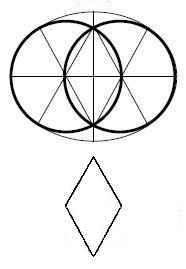To the leftist philosophers of Villanova
From "Make a Différance"
(Women's History Month, 2005)—
Frida Saal's
Lacan  Derrida:
Derrida:
"Our proposal includes the lozenge (diamond) in between the names, because in the relationship / non-relationship that is established among them, a tension is created that implies simultaneously a union and a disjunction, in the perspective of a theoretical encounter that is at the same time necessary and impossible. That is the meaning of the lozenge that joins and separates the two proper names…. What prevails between both of them is the différance, the Derridean signifier that will become one of the main issues in this presentation."







